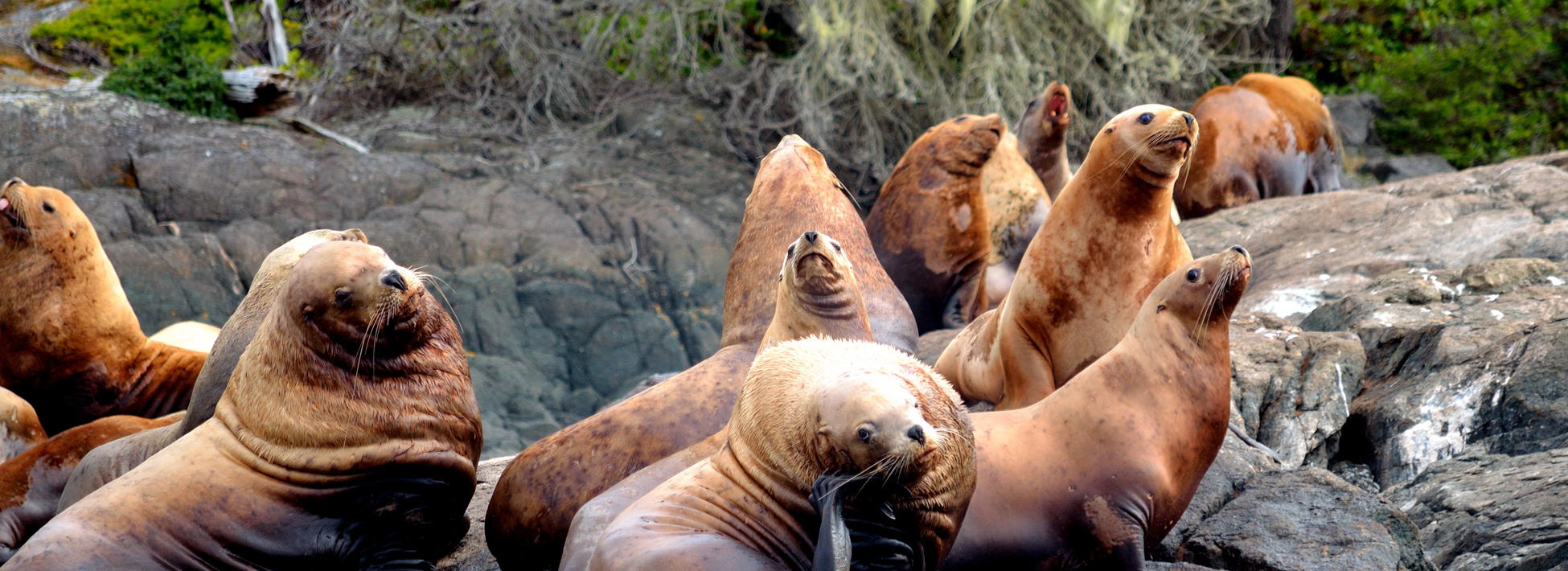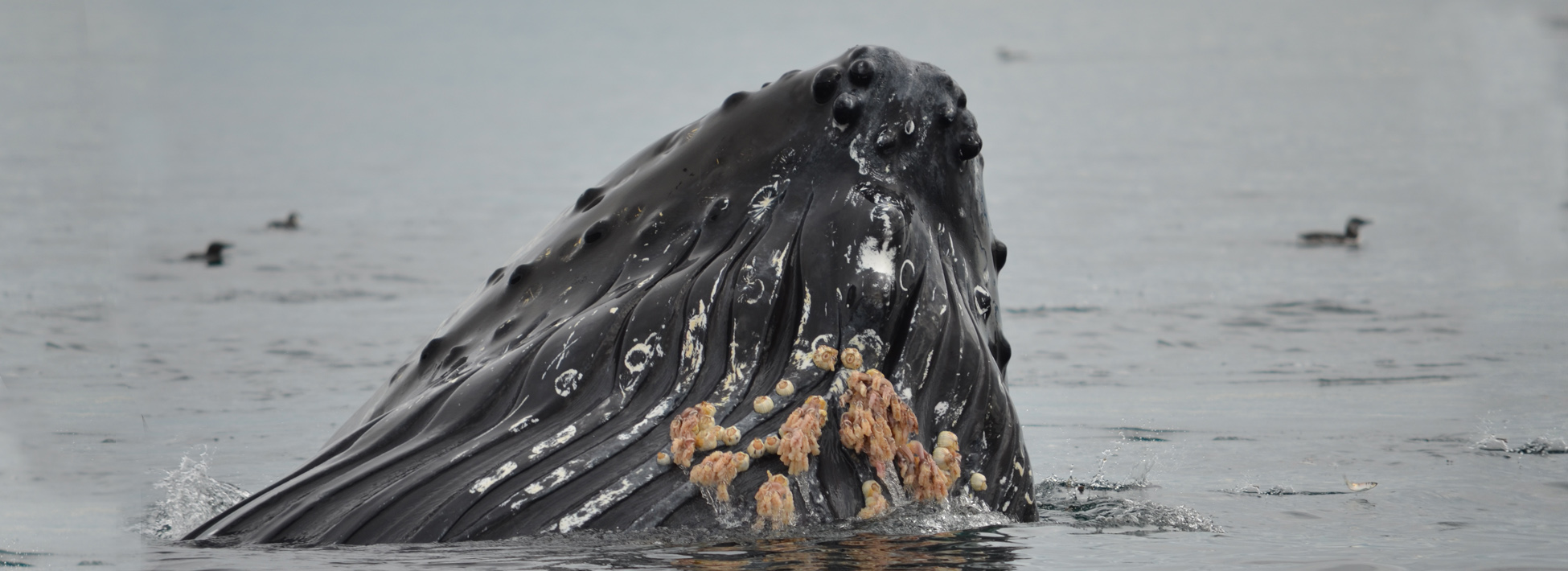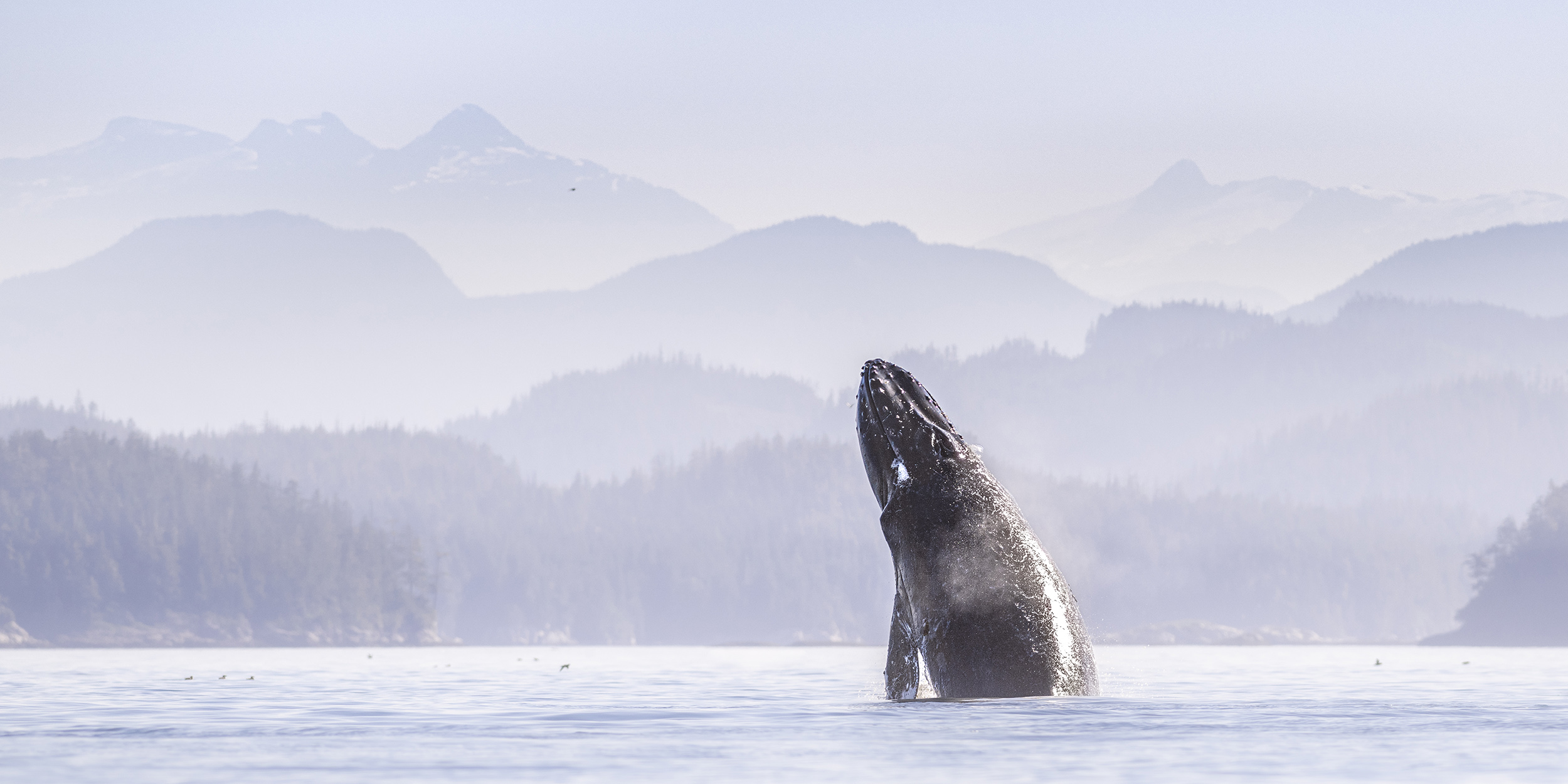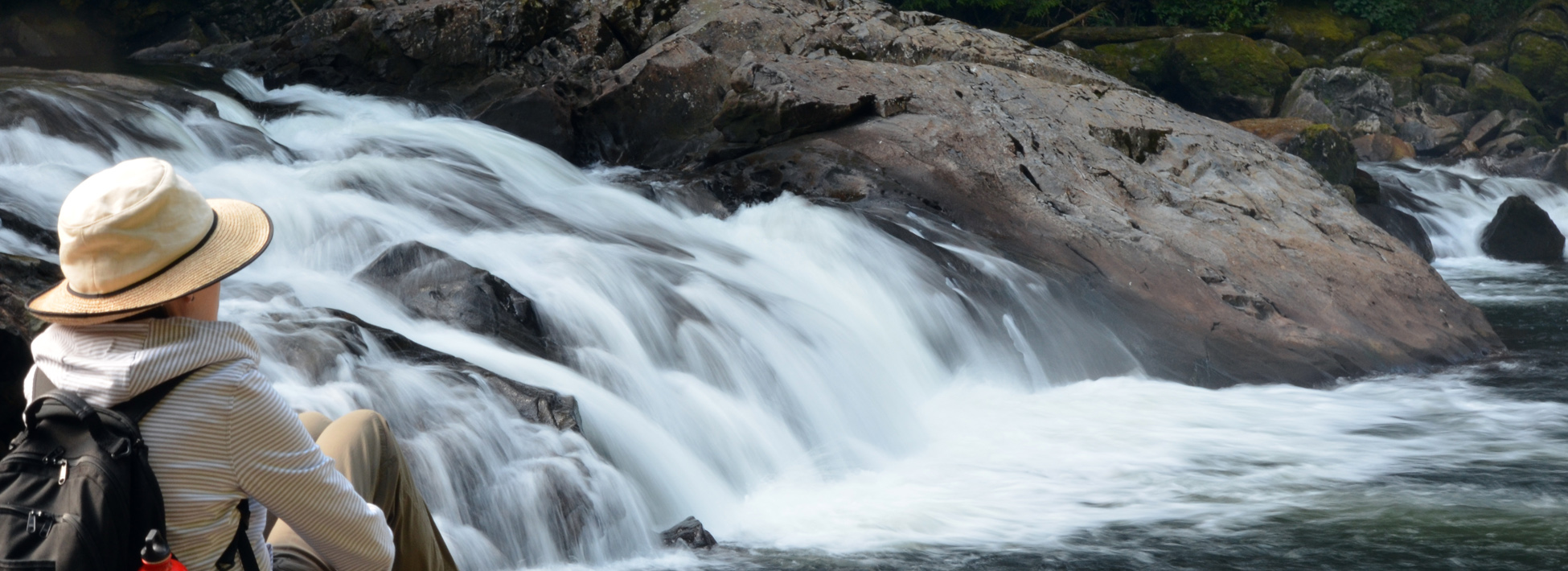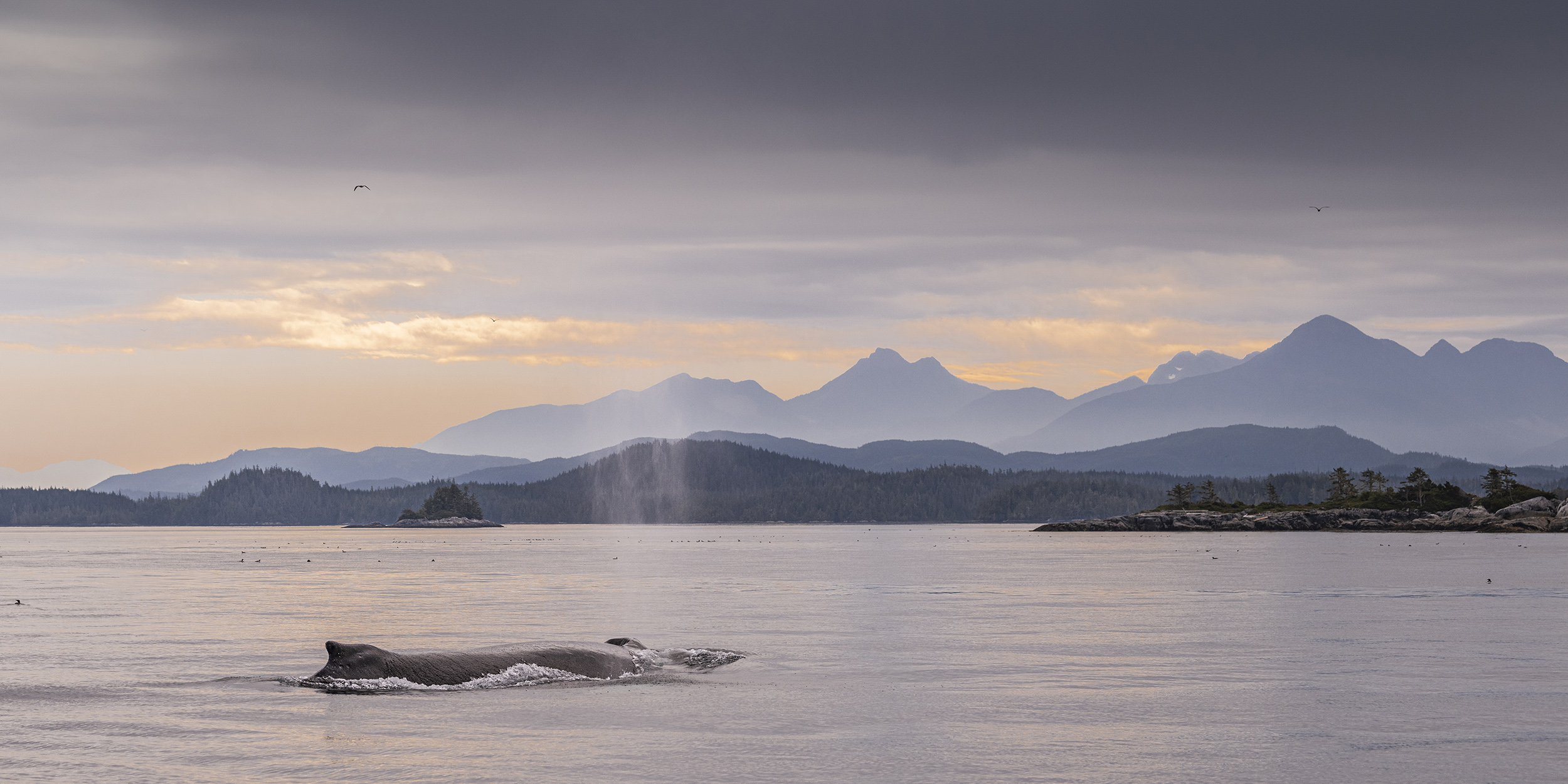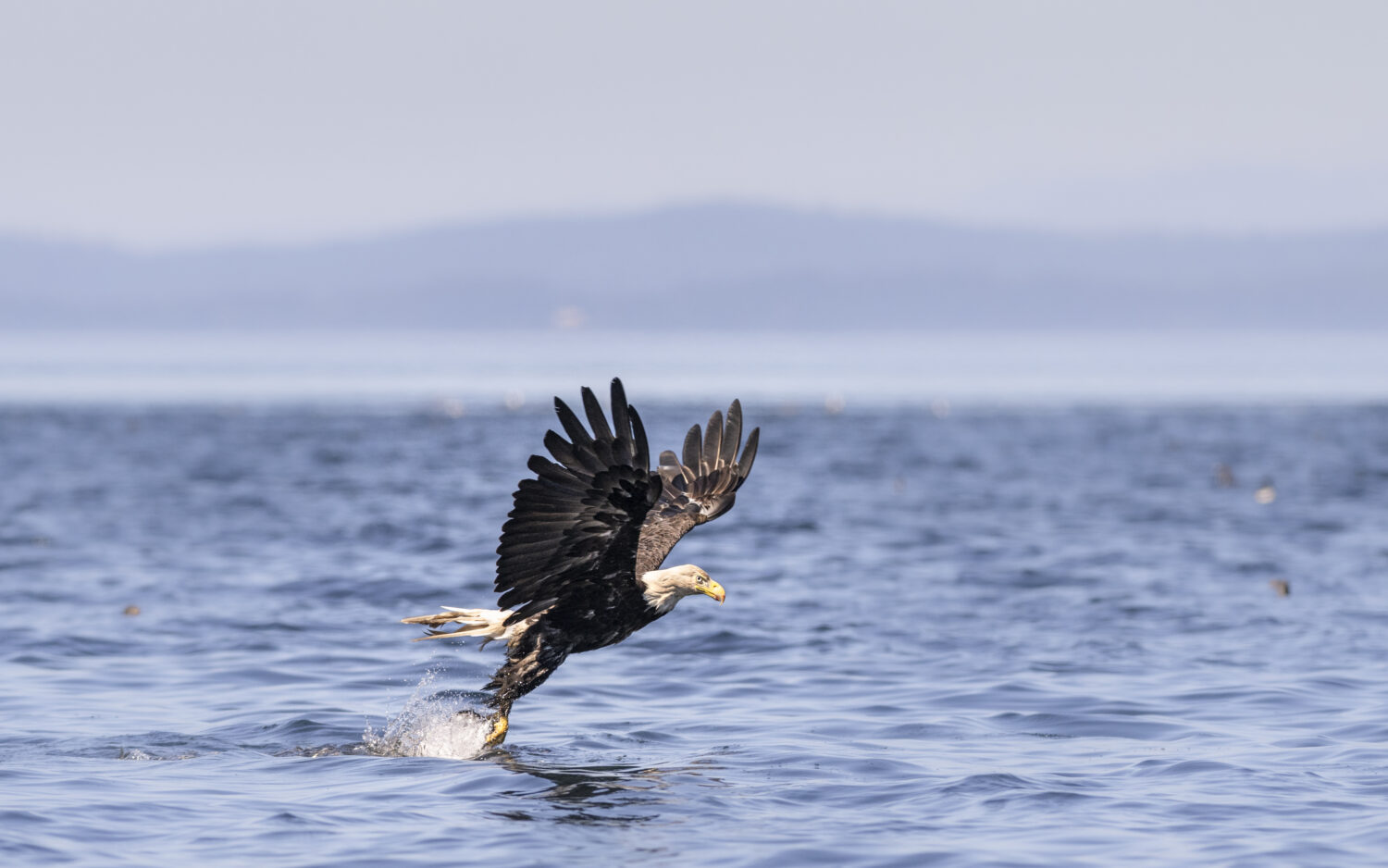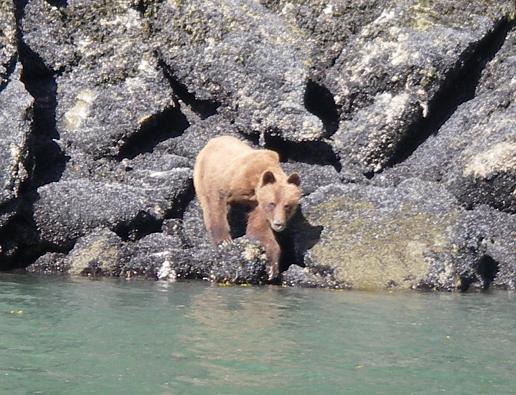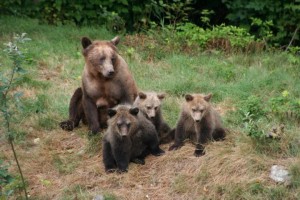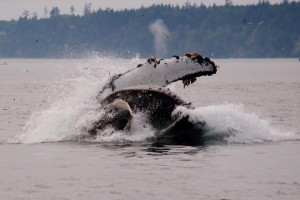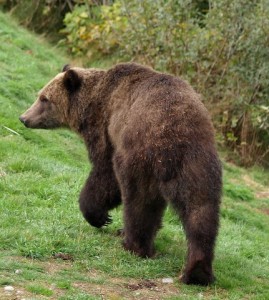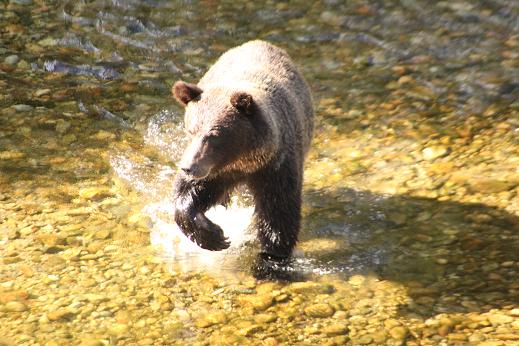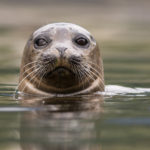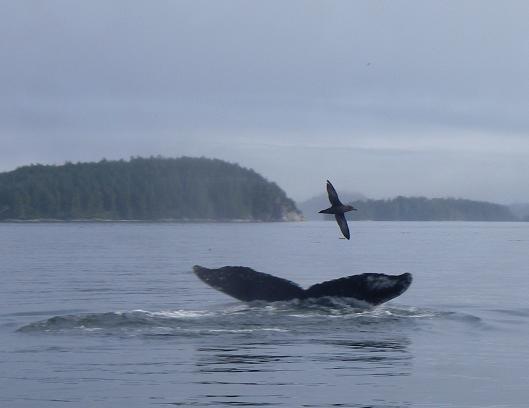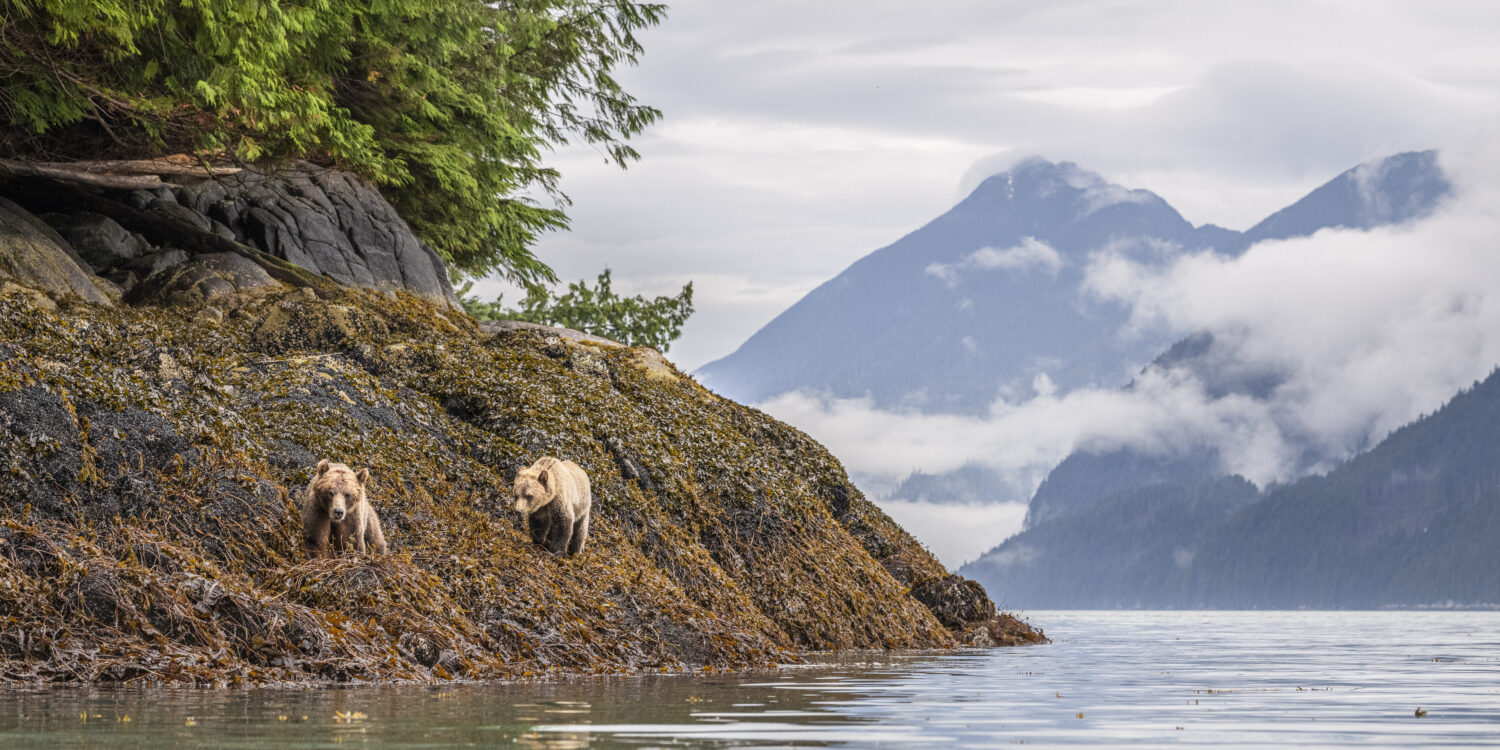
At the lodge our style of bear viewing changes with the season. In the spring and early summer we spend a lot of time in the river estuaries as the bears feed on sedge grasses. As the salmon arrive, we spend more time up the river systems viewing the bears as they try and fill up on the high protein salmon. One food source that is available to the bears throughout our season is the intertidal. When the tide is out there is a huge amount of protein available in the areas of the coastline between the high and low tide line. Some favourites include shore crab, mussels, barnacles as well as eels and other small fish. Both Black and Grizzly Bears utilise this important food source. Whenever we are travelling (particularly when the tide is out) it always is a good idea to keep a keen eye on the shoreline.
